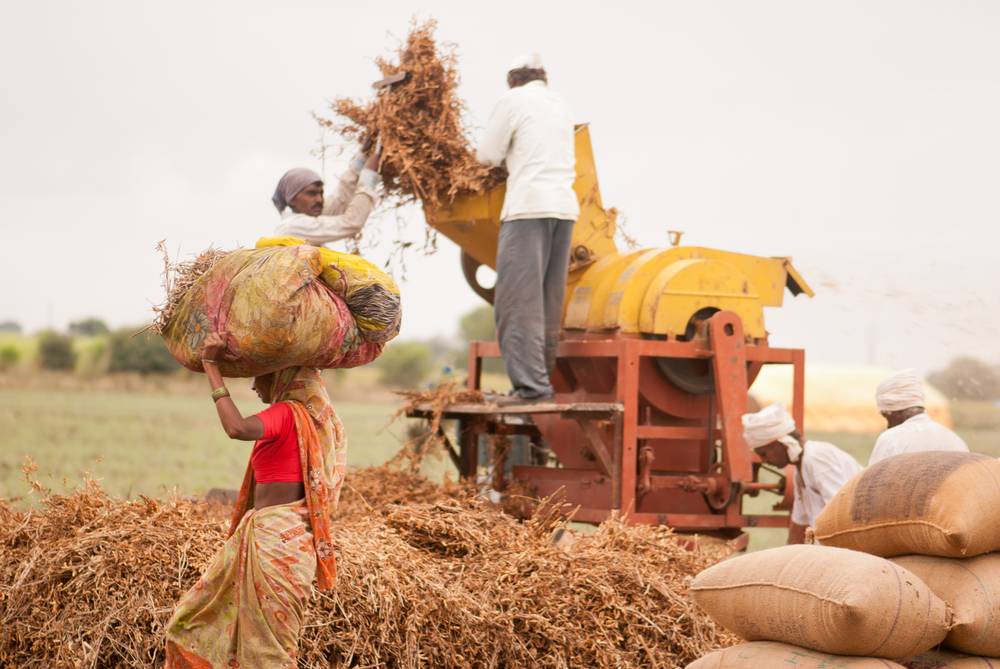 Last updated: February 6th, 2019 2:04 AM
Last updated: February 6th, 2019 2:04 AM
National Agricultural Market (NAM)
National Agricultural Market (NAM), implemented on 01.07.2015, is a pan-India electronic trading portal that networks the existing Agricultural Produce Marketing Committee (APMAC) mandis to create a unified national market for agricultural commodities. The NAM portal provides a single platform for every information and services that are related to APMAC. These information includes commodity arrivals and prices, buy and sell trade offers and provision to respond to trade offers. This article takes a closer look at the National Agricultural Market.Objective of NAM
With a goal to improvise the agri-marketing sector and to promote online marketing of agri-commodities throughout the country and to provide maximum benefits to the farmers. The scheme facilitates online trading, digitalisation of entire functioning of markets outline gate entry, lot making, bidding, generation of e-sale agreement and e- payment, etc., remove information asymmetry, increase transparency in the transaction process and to strengthen the accessibility to the markets in the nation.Elements of NAM
- NAM is a national e-market platform for transparent sale transactions and price discovery that is authorised in markets.
- Liberal licensing of traders, buyers and commission agent by the State authorities without any prior conditions of physical presence or possession of premises/ shops in the market yard.
- Once license for a trader is valid throughout all the markets in the State.
- Harmonisation of quality standards of agricultural produce and provision for determining infrastructure in every market for bidding by buyers. The common tradable parameters have developed for 90 commodities.
- A single point levy of market fee for the first wholesale purchase from the farmer.
- Provision of Soil Testing Laboratories for specific mandi to facilitate farmers to access the facility in the mandis.
Advantages of NAM
The benefits of NAM are given below.- Farmers get many options to sell their produce and competitive returns.
- NAM provides greater access for local traders to the national market for secondary trading.
- NAM enables direct participation in the local mandi trade for bulk buyers, processors, and exporters to reduce intermediation cost.
- NAM benefits mandis in the reduction of book and reporting system that is automatically generated.
- It provides better monitoring and regulation of traders and commission agents that are transparent eliminating the scope of intentional/ unintentional manipulation of tendering/ auctioning process.
- NAM decreases the workforce that is required for tendering/ auctioning process that happens throughout the system.
- NAM analysis and forecasts the arrivals and prices and the availability of the activities of each APMC on the website directly.
Implementation Process
National Agricultural Market is utilised in 585 regulated wholesale markets reaching out to 16 States and 2 Union Territories. Small Farmers' Agribusiness Consortium (SFAC) is authorising NAM as an implementing agency by providing technical support from the Strategic Partner (SP). The Department of Agriculture, Cooperation and Farmers’ Welfare (DAC&FW) meet the expenses on software and its customisation for the States, and it is cost-free. DAC&FW grants a one time fixed cost of Rs. 30 lakh per Mandi for equipment and infrastructure issues in 585 regulated manifestoes install the e-market platform. The State Government suggests names of APMCs where the project would be initiated.AGMARKNET
In order for the farming community to benefit from the new global market opportunities, the internal agricultural marketing system of India is integrated and strengthened. There are several cases that prove that farmers get a higher price by selling their produce in the regulated markets when compared to the rural, village and unregulated wholesale markets. The Directorate of Marketing and Inspection (DMI) is actively running an ICT project called as NICNET. This is based on the Agricultural Marketing Information System Network (AGMARKNET) in the country links all significant APMCs (Agricultural Produce Market Committees), State Agricultural Marketing Boards/ Directors and DMI regional offices that are situated in the country. The National Informatics Centre (NIC) is the ICT agency that supports for implementing the project. Know more about Tax on Agriculture IncomePopular Post

In the digital age, the convenience of accessing important documents online has become a necessity...

The Atalji Janasnehi Kendra Project that has been launched by the Government of Karnataka...

The Indian Divorce Act governs divorce among the Christian couples in India. Divorce...

When an individual has more than a single PAN card, it may lead to that person being heavily penalised, or worse,...

Employees Provident Fund (PF) is social security and savings scheme for employee in India. Employers engaged...


